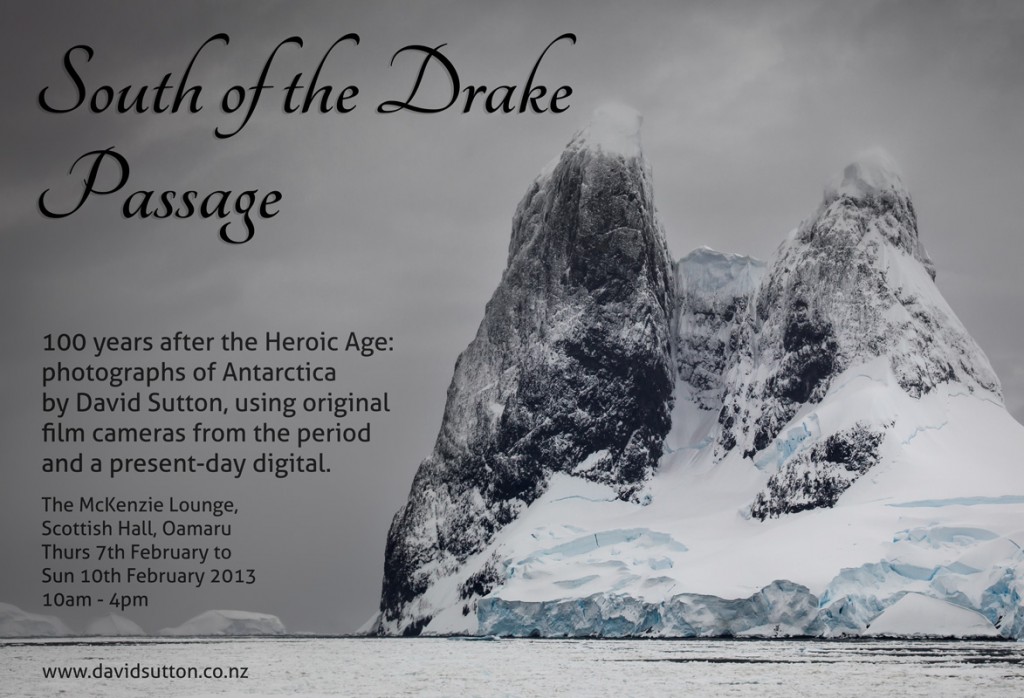
In August 2010, just before the first Christchurch earthquake closed the Canterbury Museum, I visited the “Heart of the Great Alone” exhibition showing there at the museum.
This collection of photographs by Herbert Ponting and Frank Hurley from the Queen’s Collection were originally presented to King George V. They are not just some of the most remarkable and finest Antarctic photographs, but some of the greatest images in the history of photography.
I found these photographs so extraordinary I couldn’t speak afterwards. I decided then I wanted to experience something of what those earlier photographers saw with the equipment of the time. I wanted to get to know how those old cameras worked in those conditions and compare them to our digital versions.
Taking heavy glass plate cameras by air is no longer really practical. I researched the film cameras that were used by Ponting and Hurley as back ups (in case the plate cameras couldn’t be used). Just as well in Hurley’s case as the plate camera went down with the ship. They were also the kind of camera crew members carried. Many of these cameras take 120 film which is still available.
In August 2011 I purchased a Thornton Pickard Imperial Pocket Folding Camera and a folding pocket Kodak of the type used by Olav Bjaaland to record the only images of Amundsen at the South Pole. By November I had restored and tested them, had the shutters calibrated, learned enough Spanish to say “this is photographic film, please do not x-ray!” and was on an expedition ship sailing from Ushuaia.
The films that worked best in these cameras turned out to be Fuji Reala 100 for colour and Fuji Neopan 100 for black and white. I took rolls of both but used mainly the colour film to keep my options open. For the exhibition some have been left in colour and some converted to black and white. The colour film was developed here in Christchurch and I scanned the negatives and printed them on my Canon ipf 6300 inkjet printer.
Apart the initial developing they are completely my vision of what I saw and remember through the viewfinder of a camera from 1911. They bear the touch of a human being just the same as the prints I did as a teenager, but with the technology appropriate to today.
They are “handmade”. They have a visual and tactile quality that is impossible to reproduce on the web.
This is what makes the venture so fascinating. Holding up prints from my digital camera and from my antique cameras side by side is wonderful. They show how the way we perceive the world through our technology has changed.
As part of the Oamaruscott100 the exhibition will run in the Colin McKenzie Lounge in the Scottish Hall, Tyne Street, Oamaru, from the 7th to the 10th of February. There will be a talk on “Photography and the Heroic Age of Antarctic Exploration” and I’ll post on that later this month.